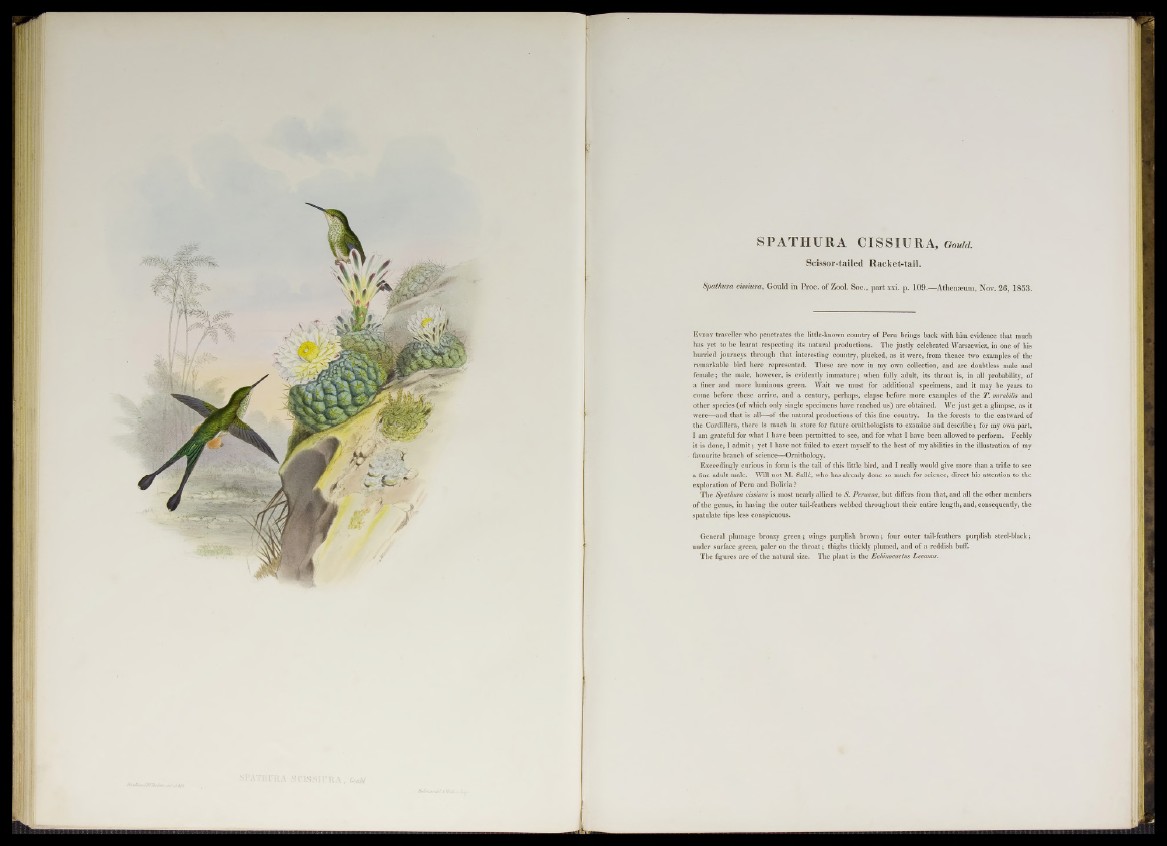
SPATHURA CISSIURA, Gould.
Scissor-tailed Racket-tail.
Spathura eisdura, Gould in Proo. o f Zool. Soe., part m . p. 109.—Athenseum, Nov. 26, 1853.
E v e r y traveller who penetrates the little-known country of Peru brings back with him evidence that much
has yet to be learnt respecting its natural productions. The justly celebrated Warszewicz, in one of his
hurried journeys through that interesting country, plucked, as it were, from thence two examples of the
remarkable bird here represented. These are now in my own collection, and are doubtless male and
female; the male, however, is evidently immature; when fully adult, its throat is, in all probability, of
a finer and more luminous green. Wait we must for additional specimens, and it may be years to
come before these arrive, and a century, perhaps, elapse before more examples of the T. mirabilis and
other species (of which only single specimens have reached us) are obtained. We just get a glimpse, as it
were—and that is all—of the natural productions of this fine country. In the forests to the eastward of
the Cordillera, there is much in store for future ornithologists to examine and describe; for my own part,
I am grateful for what I have been permitted to see, and for what I have been allowed to perform. Feebly
it is done, I admit; yet I have not failed to exert myself to the best of my abilities in the illustration of my
favourite branch of science—Ornithology.
Exceedingly curious in form is the tail of this little bird, and I really would give more than a trifle to see
a fine adult male. Will not M. Salle, who has already done so much for science, direct his attention to the
exploration of Peru and Bolivia ?
The Spathura cissiura is most nearly allied to S. Peruana, but differs from that, and all the other members
of the genus, in having the outer tail-feathers webbed throughout their entire length, and, consequently, the
spatulate tips less conspicuous.
General plumage bronzy green; wings purplish brown; four outer tail-feathers purplish steel-black;
under surface green, paler on the throat; thighs thickly plumed, and of a reddish buff.
The figures are of the natural size. The plant is the Echinocactus Leeanus.